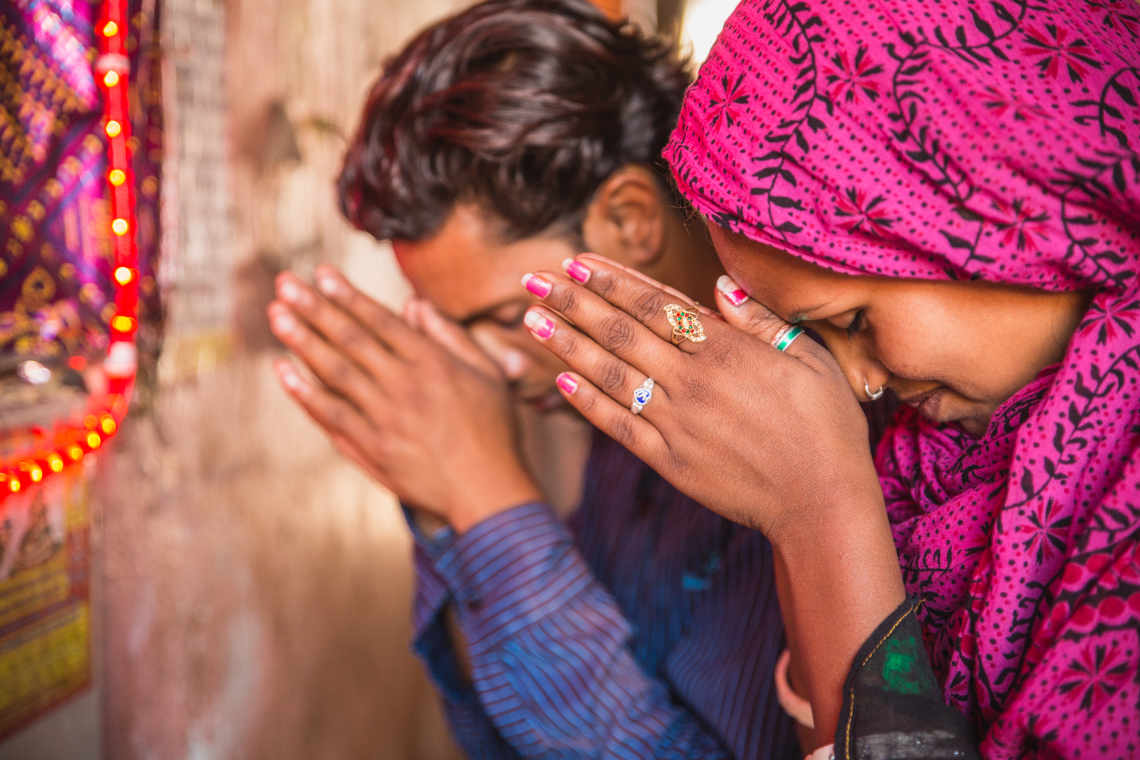Étude de marché sur la religion hindoue

Les individus et les organisations créent des entreprises dans le but principal de réaliser des bénéfices. Mener une étude de marché sur la religion hindoue les aidera à comprendre les limites et les conditions de ce secteur. Toutes les considérations et tous les efforts sont mis en œuvre pour garantir un retour sur investissement maximal.
Une forte demande se traduit généralement par des bénéfices élevés, ce qui se reflète positivement sur l'image de l'établissement. Il est clairement supposé que la demande est liée à la réponse des consommateurs.
Le comportement des consommateurs a toujours influencé la demande de produits et de services. Un des facteurs expliquant ce comportement est la religion du consommateur.
La religion est un sujet qui mérite d’être souligné en raison de son impact direct sur l’économie. L’hindouisme, par exemple, a une grande influence sur l’Asie du Sud et certains pays d’Asie du Sud-Est. Tout investisseur intéressé doit comprendre la relation entre la religion et ses fidèles avant de prendre toute décision financière.
Quelle est la religion hindoue ?
L'hindouisme est la troisième religion du monde, après le christianisme et l'islam. On estime qu'il compte 1,3 milliard de fidèles dans le monde, principalement dans les pays d'Asie du Sud et d'Asie du Sud-Est. Les adeptes de cette religion sont appelés hindous.
Les hindous vénèrent principalement trois dieux : Brahma, le créateur, Vishnu, le protecteur, et Shiva, le destructeur. Cependant, il existe environ 33 dieux et divinités, généralement classés en différents groupes. Brahma, appelé par divers noms, est le seul être suprême parmi eux.
La religion hindoue croit fermement aux doctrines du samsara et du karma. Le samsara désigne le cycle continu de la vie, de la mort et de la réincarnation, tandis que le karma fait référence au retour des actions d'une personne, qu'elles soient bonnes ou mauvaises.
Ce qui différencie l’hindouisme des autres religions, c’est qu’il n’y a aucune excommunication ou conversion formelle de la foi.
Pays pratiquant l'hindou
L’Inde, étant l’un des pays les plus peuplés au monde, est composée en majorité d’hindous. Près d'un milliard d'Indiens sont des adeptes de la religion hindoue, totalisant 801 TP3T d'adeptes de l'hindouisme.
Le Népal, le Bangladesh, l’Indonésie, le Pakistan, le Sri Lanka, la Malaisie et la Birmanie sont d’autres pays qui pratiquent la religion hindoue.
En ce qui concerne les pays non asiatiques, les États-Unis comptent environ 1,8 million de fidèles hindous et le Royaume-Uni 800 000.
Industries affectées par la religion hindoue
Les pratiques religieuses hindoues n'affectent que les industries situées dans la région où elles sont principalement pratiquées. Étant donné que presque tous les Indiens sont hindous, l'ensemble du pays est concerné. Se concentrer sur les études de marché sur la religion hindoue aidera les industries à mieux comprendre.
Le choix alimentaire est un facteur important dans la religion hindoue. Les hindous apprennent à être lacto-végétariens, en évitant la viande et les œufs. La plupart pratiquent la limitation de leur régime carné au lieu de s’abstenir complètement de viande.
Les hindous ne mangent pas de bœuf, car les vaches sont considérées comme sacrées et représentent la Mère Nature. Le saindoux animal est également interdit, ce qui permet aux huiles végétales de prospérer. Il est intéressant de noter que les produits laitiers sont autorisés.
La consommation d'alcool fait toujours l'objet de débats. Les hindous les plus conservateurs évitent de consommer de l'alcool, estimant qu'il a une mauvaise influence sur l'esprit et le corps. En revanche, les hindous libéraux se livrent au vin, en particulier lors de réunions sociales. L'une des entreprises qui dominent l'industrie du vin est Sula Vineyards. Ce producteur de vin détient 52% de parts de marché en Inde.
Tout comme l’alcool, le tabac n’est pas totalement interdit. Cependant, certains hindous considèrent l’ivresse comme une forme de péché. Il semble cependant qu’il existe une demande importante pour les produits à base de tabac. Indian Tobacco Company Limited, le premier fabricant de cigarettes, a à elle seule une capitalisation boursière de 3,3 billions de roupies (environ 1440 milliards de pesos philippins).
Un autre secteur économique qui bénéficie de l'influence positive de la religion hindoue est le marché de l'encens. L'encens, mieux connu en Inde sous le nom d'Agarbatti, est un élément essentiel de nombreux rituels religieux.
Dans l'industrie textile, le sari et l'angarkha sont très demandés. Les femmes qui portent leur sari évoquent la valeur qu'elles accordent à leur culture car il représente la divinité, tandis que les hommes portent l'angarkha, qui signifie protéger le corps. Cependant, l'angarkha est désormais produit et porté par les deux sexes.
Opportunités

Voici des opportunités pour les investisseurs et les entreprises intéressées par l’hindouisme dans les endroits où la religion est dominante :
L'industrie de la viande de porc et l'autorisation d'importation par le gouvernement indien : Ces dernières années, de nombreux hindous libéraux ont adopté les produits à base de porc dans leur régime alimentaire. Le gouvernement indien a annoncé qu’il autorisait l’importation de produits à base de viande de porc en provenance des États-Unis. Le porc n’est pas un aliment de base dans la plupart des cuisines indiennes. Cependant, de nombreux États indiens, comme Goa et Karnataka, utilisent davantage le porc que d’autres. Les États du Pendjab et de l’Haryana ont commencé à construire leurs fermes porcines pour répondre à la demande croissante. Par conséquent, cela a influencé l’essor des plats à base de porc, poussant les restaurants à mettre à jour leur menu. Le gouvernement indien espère élargir la gamme de viande de porc disponible sur son marché local.
Choix de repas végétaliens : Les hindous conservateurs et soucieux de leur alimentation s’appuient sur les fruits et les légumes. Les entreprises qui proposent des plats végétaliens voient là une opportunité de prendre le relais. Il est intéressant de noter que les pommes de terre sont le légume le plus consommé en Inde, suivi des légumineuses, du chou-fleur et des pousses d’épinards. Les fabricants de viande végétalienne suivent également cette tendance en proposant des alternatives à la viande à base de plantes. De nombreuses start-ups en Inde proposent leurs produits en ligne, qui sont généralement composés de plats végétaliens d’inspiration gastronomique.
Demande continue de sari : On s'attend à une forte demande de saris dans les années à venir. De nombreux fabricants de textiles et boutiques de mode ont intégré le sari pour répondre aux attentes modernes. Cependant, les jeunes générations ont tendance à s'appuyer sur le salwar kameez (également connu sous le nom de vêtements occidentaux), en particulier dans les zones semi-urbaines et urbaines. Mais la catégorie des saris devrait rester prédominante dans l'industrie, s'adressant principalement aux femmes âgées et d'âge moyen.
La rédemption du marché de l’encens : Le marché de l'encens a connu une baisse il y a quelques années. Cependant, il a récemment connu une croissance, l'industrie de l'agarbatti connaissant une augmentation de la demande de 30%. Pour maintenir son élan, l'industrie exporte de l'encens dans près de 150 pays. Les tendances de l'industrie montrent également que les consommateurs ont tendance à acheter de l'agarbatti en packs économiques ou à prix avantageux. Cela signifie que les clients sont plus susceptibles d'acheter en lots qu'en pièces.
À propos de SIS International
SIS International propose des recherches quantitatives, qualitatives et stratégiques. Nous fournissons des données, des outils, des stratégies, des rapports et des informations pour la prise de décision. Nous menons également des entretiens, des enquêtes, des groupes de discussion et d’autres méthodes et approches d’études de marché. Contactez nous pour votre prochain projet d'étude de marché.

